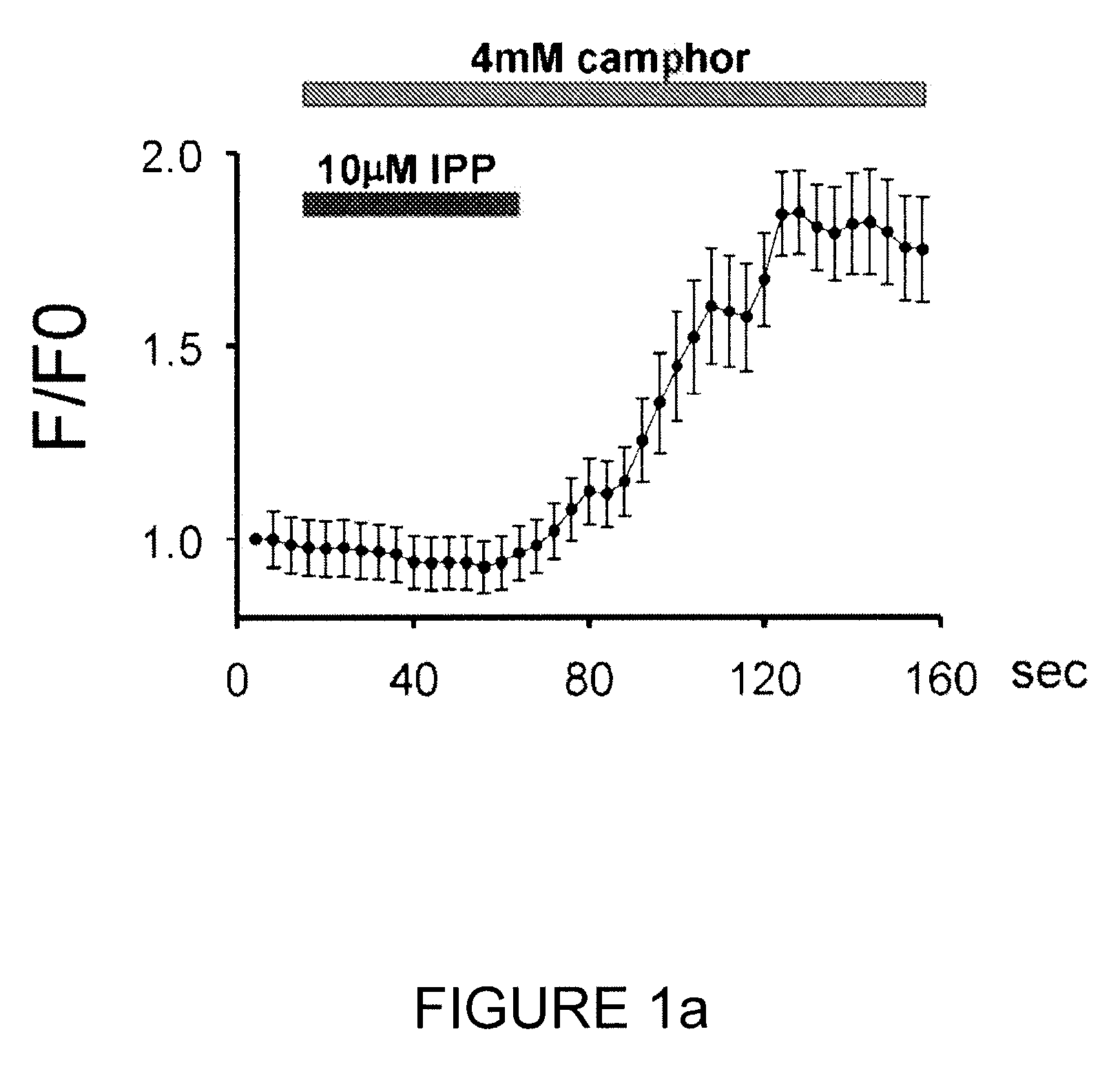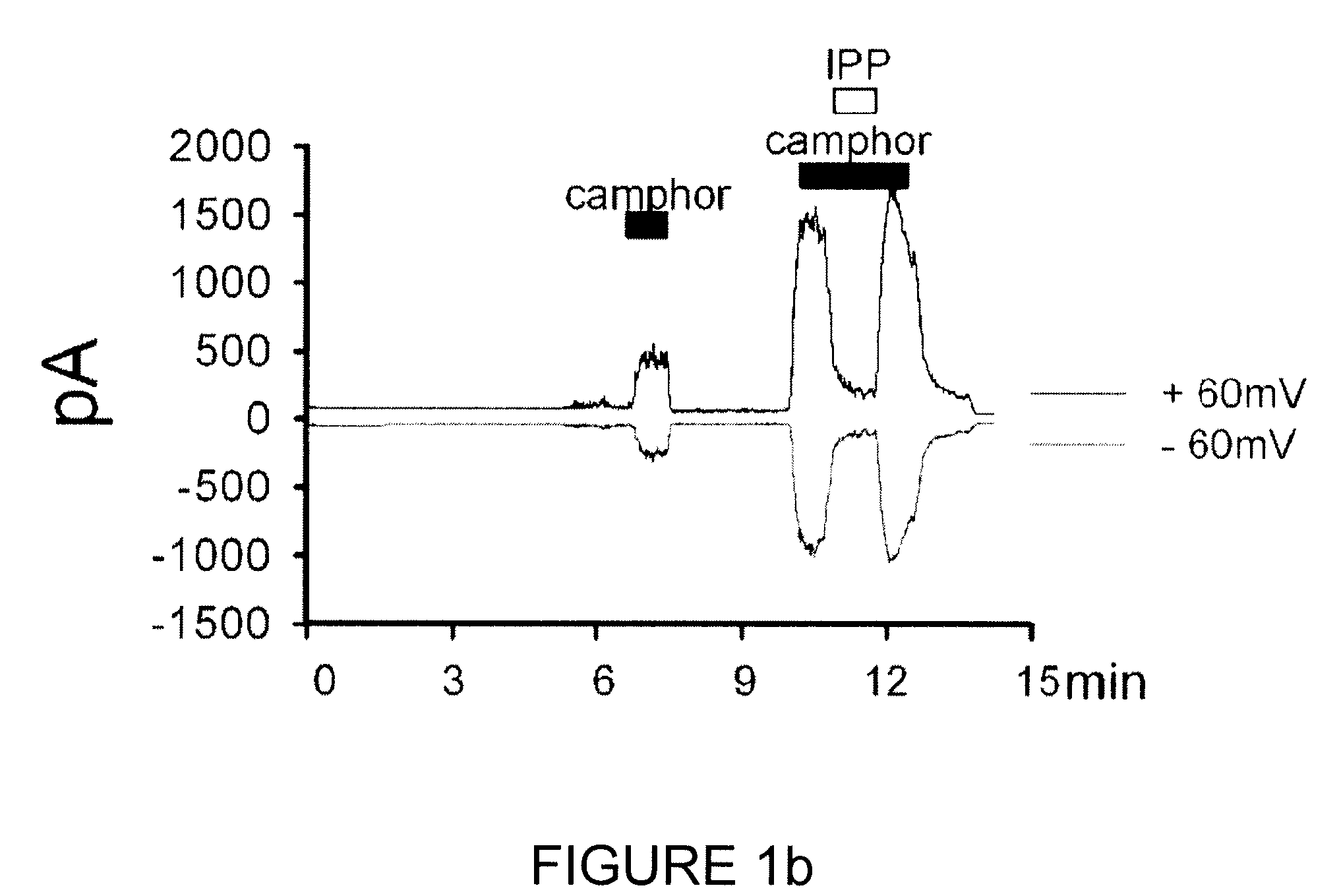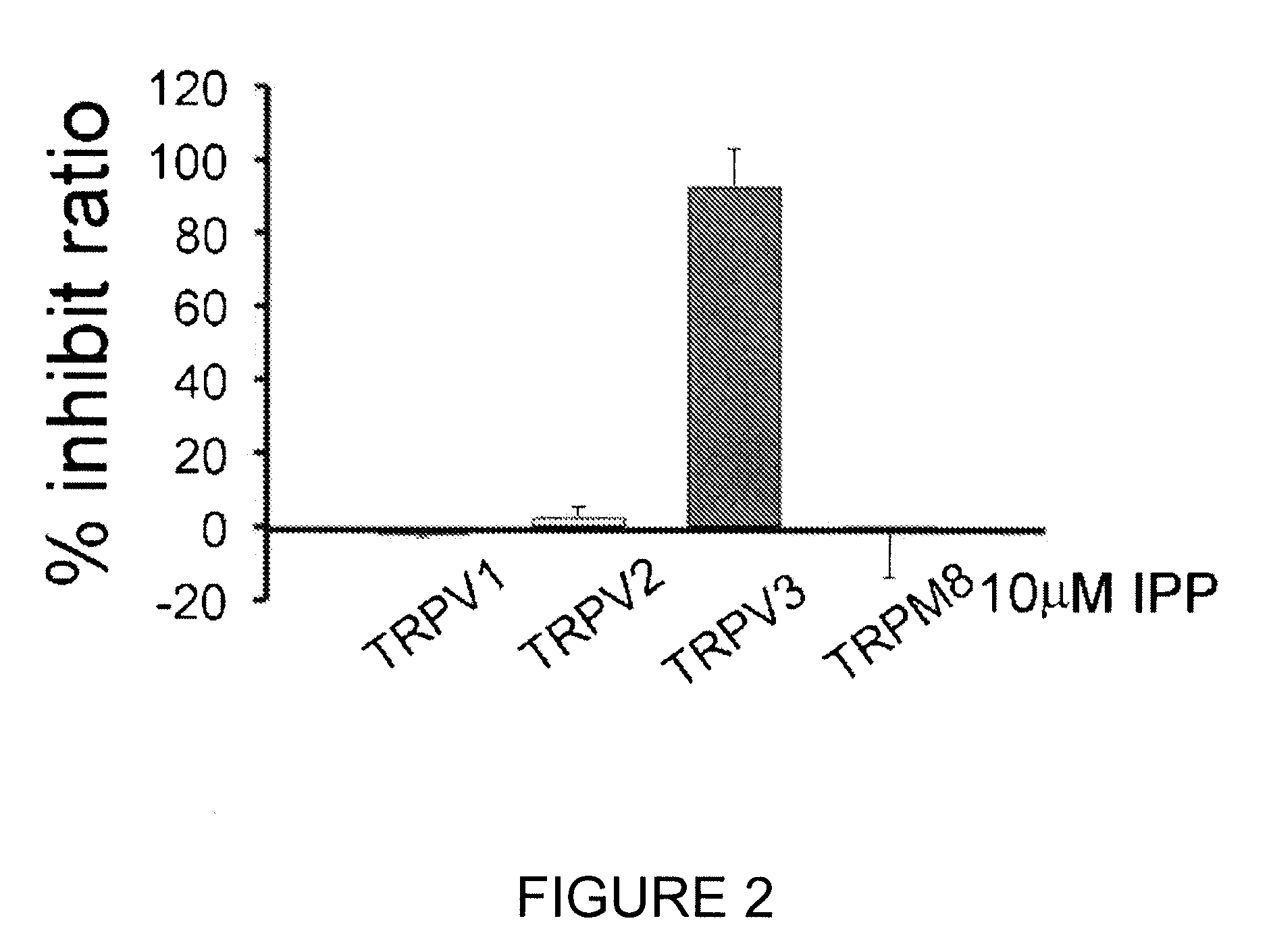Compound for inhibiting trpv3 function and use thereof
a technology of trpv3 and inhibitory compound, which is applied in the direction of phosphorous compound active ingredients, drug compositions, biocides, etc., can solve the problem that no reports have been made so far in relation to a specific inhibitor of trpv3, and achieve the effect of facilitating the development of an effective pain inhibitor and increasing sensory cell reactivity
- Summary
- Abstract
- Description
- Claims
- Application Information
AI Technical Summary
Benefits of technology
Problems solved by technology
Method used
Image
Examples
example 1
Construction of Cell Lines Transfected With TRPV
[0072]HEK293T cell line (ATCC CRL-11268) was transiently transfected with plasmid DNA containing polynucleotide encoding rTRPA1 (SEQ. ID. NO: 1), rTRPV2 (SEQ. ID. NO: 2), mTRPV3 (SEQ. ID. NO: 3), rTRPV4 (SEQ. ID. NO: 4), mTRPM8 (SEQ. ID. NO: 5) or mTRPA1 (SEQ. ID. NO: 6).
[0073]Particularly, the HEK293T cell line was transiently transfected with 3 μg / 35 mm dish of pcDNA3.1 vector (containing polynucleotide encoding hTRPV3, rTRPV2, rTRPV1 or mTRPV4), pcDNA5 / FRT vector (containing polynucleotide encoding rTRPV1, rTRPV2, mTRPV3, rTRPV4, mTRPM8 or mTRPA1), and 600 ng / well of pCDNA3 (Invitrogen Corp., USA; containing green fluorescent protein (GFP) cDNA) using Fugene6 (Roche Diagnostics, USA) according to manufacturer's instruction. The transformed cells were cultured in DMEM / F12 medium containing 10% FBS and 1% penicillin / streptomycin in a CO2 incubator for 24 hours. The cells were smeared on poly-L-lysine-coated glass coverslips, followed ...
example 2
TRPV3 Activity Inhibition by TRPV3 Inhibitor
Treatment of Compounds
[0074]The TRPV3 transfected cell line prepared in Example 1 was treated with 10 μM camphor (Sigma-Aldrich, USA), during which 10 μM of isopentenyl pyrophosphate (Sigma-Aldrich, USA) was treated for a certain period of time. Stock solutions were made using water or DMSO, and were diluted with test solutions before use.
Measurement of Intracellular Calcium Level Changes by Calcium Imaging
[0075]Calcium imaging was performed with the transfected cell line treated by the method of Example .
[0076]Particularly, the transfected cell line of Example was loaded with Fluo-3AM (5 μM; Sigma Aldrich, USA) in the bath solution (140 mM NaCl, 5 mM KCl, 2 mM CaCl2, 1 mM MgCl2, 10 mM HEPES; adjusted to pH 7.4 with NaOH) containing 0.02% pluronic acid (Invitrogen, USA) at 37° C. for 1 hour. Calcium imaging was performed with LSM5 Pascal confocal microscope (Carl Zeiss, Germany), and time-lapse images (excitation 488 nm / emission 514 nm)...
example 3
Investigation of Responses to TRPV3 Inhibitor in Different TRP Transfected Cell Lines
[0081]The TRPA1, TRPV1, TRPV2, TRPV3, and TRPM8 transfected cell lines prepared by the method of Example 1 and the non-transfected HEK cell line (control group) were treated with 10 μM of isopentenyl pyrophosphate. Calcium imaging was performed with the transfected cell lines treated as the above by the same manner as described in Example .
[0082]As a result, as shown in FIG. 2, among the TRPs known to be expressed in sensory neurons and mediated pain, only TRPV3 was inhibited by isopentenyl pyrophosphate.
PUM
| Property | Measurement | Unit |
|---|---|---|
| Hypersensitivity | aaaaa | aaaaa |
Abstract
Description
Claims
Application Information
 Login to View More
Login to View More - R&D
- Intellectual Property
- Life Sciences
- Materials
- Tech Scout
- Unparalleled Data Quality
- Higher Quality Content
- 60% Fewer Hallucinations
Browse by: Latest US Patents, China's latest patents, Technical Efficacy Thesaurus, Application Domain, Technology Topic, Popular Technical Reports.
© 2025 PatSnap. All rights reserved.Legal|Privacy policy|Modern Slavery Act Transparency Statement|Sitemap|About US| Contact US: help@patsnap.com



